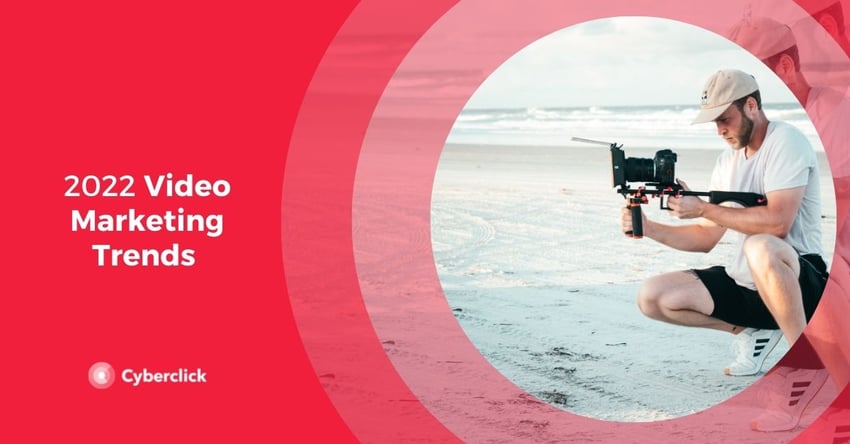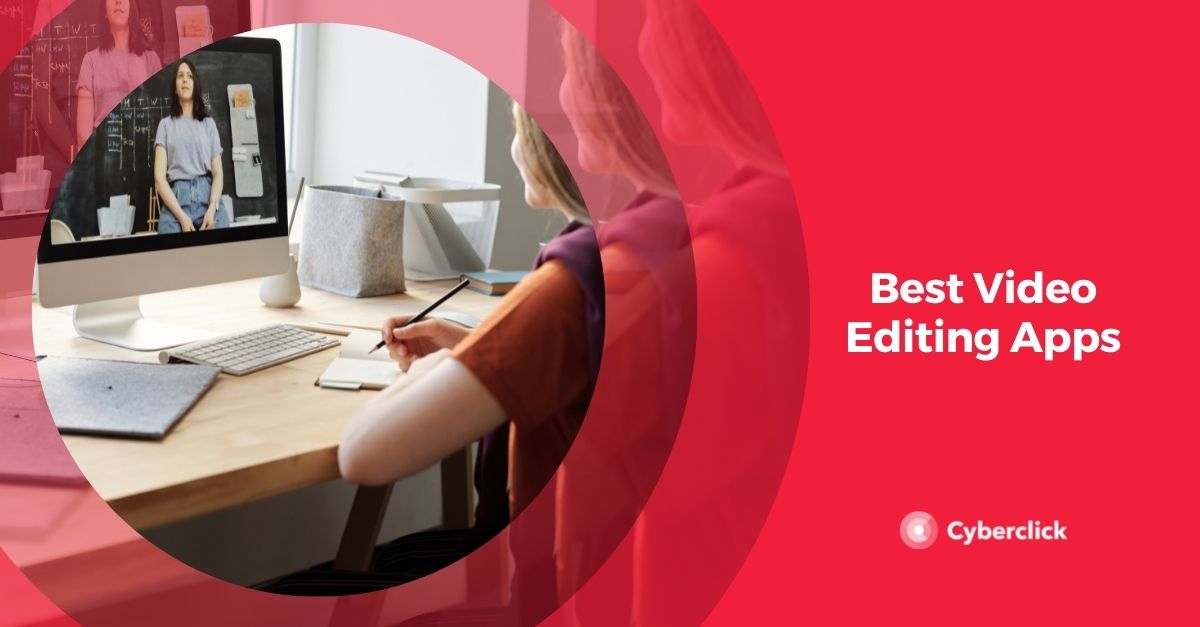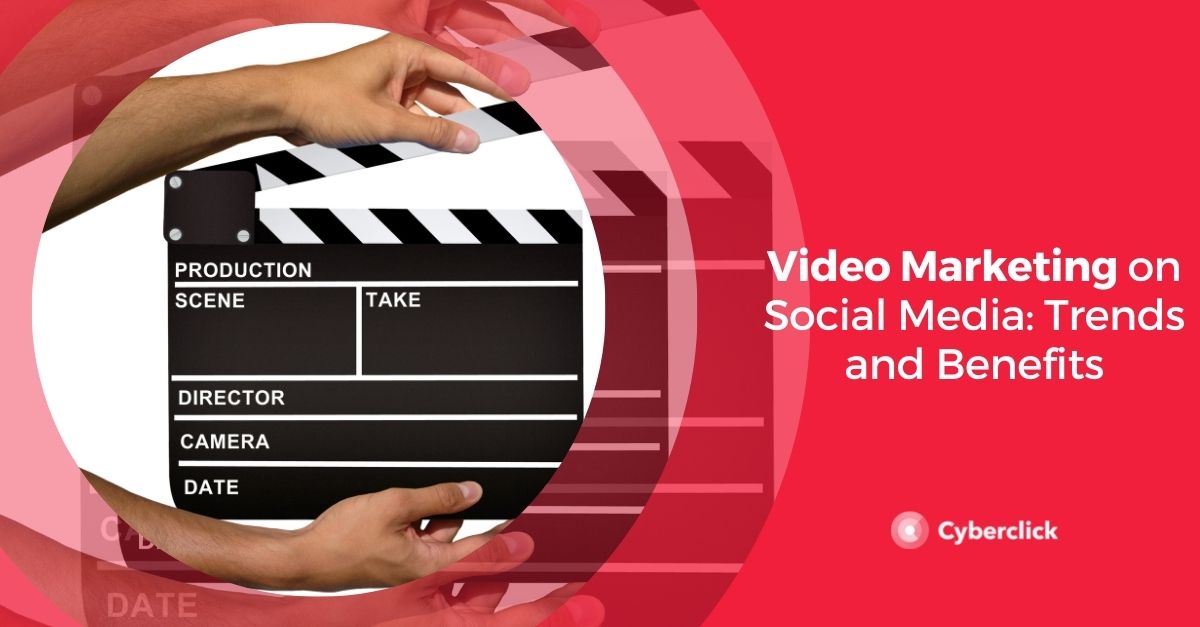In 2022, video marketing is more essential than ever. 86% of companies use video advertising as part of their digital marketing strategy, and 80% of global internet traffic this year will come from downloading and viewing audiovisual content.
For marketers, it's essential to stay on top of video marketing trends. This year is full of various innovations: soundless videos, virtual reality, personalization, campaigns created with smartphones... and so much more.
Read on to find out what's on the horizon.


10 Video Marketing Trends for 2022
1. Short Form Videos
This video marketing trend began to take shape in 2020 thanks to TikTok and, two years later, all video platforms have been updated to accommodate short-form videos. In addition to TikTok and Instagram Reels, we now also have YouTube Shorts, a vertical video format limited to 60 seconds in length.
Short-form videos delivered the second-highest ROI for B2C marketers in 2021 and are the area in which marketers plan to invest the most in 2022. Moreover, 32% of them will use this format in their marketing for the first time.
Short videos are on the rise because of their ability to effectively convey a brand's message. Most users close a video after only 20 seconds, so there is very little time to capture their attention. Because of this, some brands are choosing to take this trend even further with ultra-short videos, like Hefty's 6-second ads.
2. Shoppable Videos
Shoppable videos shorten the customer journey by offering users the opportunity to purchase products directly from the video via a pop-up button. This button takes the user to a landing page where they can complete the purchase process. It is a format similar to shoppable posts on social networks, which have been trending for years.
Shoppable videos are very effective in increasing click-through and conversion rates, as they create a clear path to purchase and reduce friction. If the user is ready to buy, it's very easy for them to do so.
A great example of this video marketing trend is fashion brand Benetton, which used a shoppable video from one of its runway shows to take the audience directly from the runway to its product pages. Viewers could click on the models to view individual garments or click the "Buy the video" button to view the entire collection.
3. 1:1 Video Personalization
Content personalization is not new in marketing, but until now, it has barely been used in videos. With this new video marketing trend, marketers can produce personalized video messages that replace emails or phone calls.
On a technical level, the process of making these videos is fairly straightforward, as it simply involves changing parts of the video to include elements such as the viewer's name. You can even create a video template and automatically integrate CRM data.
This personalization allows brands to offer highly specific solutions for each customer, facilitating purchasing decisions. Plus, ultra-personalized videos are much more memorable for consumers.
4. Live Videos
Although the format existed before, live video exploded in the wake of the 2020 lockdown. In that context, it was an essential way for brands to stay in touch with consumers. Today, it has become a favorite format for brands, influencers, and viewers. Although in-person interactions are back, the demand for live video continues to grow.
They have multiple advantages for brands:
- They are great for interaction
- Users watch live videos for 3x longer than pre-recorded ones
- They are very cost-effective
- Once the video has been streamed, the recording can remain on the platform and continue to accumulate views.
Related article: How to Communicate Effectively: 12 Tips for Your Livestreams
5. Ephemeral Video Content
During the last few years, we have experienced the rise of Stories, a format that is not only characterized by its short duration but is also only accessible for 24 hours. This video marketing trend started with Snapchat Snaps and then spread to other channels, such as Instagram and Facebook Stories.
Ephemeral video creates a sense of urgency, as the viewer is motivated to watch it before it disappears. It also offers many possibilities to interact with the brand's customers, such as taking polls or asking users to tag the brand in their own stories.
6. Video Without Sound
Auto-playing sound banners are a very intrusive and annoying experience for users; so much so that 66% of people say they hate it when video ads play with sound automatically.
The alternative is videos without sound. 85% of Facebook users and 79% of LinkedIn users watch videos without sound. In addition, according to Facebook, videos that use captions increase viewing time by 12%.
On top of that, studies suggest that soundless ads have a higher CTR and longer engagement rate than in-stream video advertising, so they're a great trend to incorporate into your video marketing.
7. Animated Ads
Animated ads are an easy-to-understand format for users who don't want sound. They are a more cost-effective and dynamic way of translating the classic TV commercial concept to video. 30, 60, or 90-second spots that tell a short story using all kinds of emotions to relate with users,
Today, many companies are using motion graphics ads to create content that is easy to understand and connects on an emotional level with their target audiences. For example, Slack uses this resource frequently to make impactful ads.
8. Videos Produced With Smartphones
Nowadays, you don't need expensive equipment or big production budgets to produce great videos. It is possible to create great content with nothing more than your smartphone.
Influencers have contributed a lot to the popularity of smartphone-created videos, with content such as perfectly edited TikToks, blogs, or collaborations with brands.
Even big brands are creating smartphone videos so that their content is perceived as more authentic and relatable. One of the best examples of this is Apple's #ShotOniPhone campaign, in which they asked users to submit their best photos taken with an Apple smartphone in exchange for the opportunity to be featured in an ad or billboard. The campaign generated more than 15 million submissions.
9. Videos With Virtual Reality
Consumers are demanding more and more interactive content, and as a result, traditional video is starting to fall short.
The pandemic has accelerated the use of VR in videos, as all kinds of brands have used it to create immersive experiences.
One of the biggest proponents of virtual reality is Facebook, whose commitment to the metaverse is evident in its name change to Meta. The next few years will undoubtedly bring some interesting developments in this sector.
10. Brand Vlogs
Vlogs–blogs in video format–are one of the most effective ways to share content with the public. With more and more users preferring to consume video content rather than written content, vlogs have become a great option for brands.



![30+ Video Marketing Statistics [2020]](https://www.cyberclick.net/hubfs/blog/30+%20Video%20Marketing%20Statistics.jpg)

Leave your comment and join the conversation